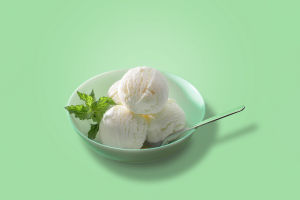Kitchen's Best Cleaning Tool
In kitchen cleaning, the sponge brush is an essential tool.
Its compact and lightweight design, combined with excellent stain-removal abilities and ease of use, makes it indispensable in many households.
Typically, a sponge brush is straightforward yet effective, usually consisting of a soft sponge and a sturdy handle, and sometimes includes a scrubbing layer that helps tackle various stains and surfaces.
The main materials of a sponge brush are polyurethane sponge or fiber sponge, which are soft and highly absorbent, allowing them to easily soak up detergent and create foam during scrubbing.
On one side of the sponge, there's often a scrubbing material that can effectively remove stubborn stains, such as grease and food residues.
Some sponge brushes are even designed with an antibacterial coating to reduce bacterial growth, ensuring that the cleaning tool itself remains hygienic.
During use, a sponge brush can clean not only dishes but also pots, stovetops, sinks, and even surfaces of some kitchen appliances. The sponge's soft texture is gentle on dish surfaces and won't scratch sensitive coatings, which is particularly important when cleaning non-stick pans.
When facing stubborn grease, the scrubbing layer on the sponge brush provides additional friction, making cleaning less labor-intensive. Due to its simple structure, the sponge brush is relatively inexpensive, allowing frequent replacement to maintain kitchen cleanliness and hygiene.
Maintaining a clean sponge brush is equally important. Because it comes into contact with grease, food residues, and other materials, a sponge left uncleaned can become a breeding ground for bacteria, which may lead to odors and health concerns.
Therefore, it's crucial to rinse thoroughly and squeeze out excess water after each use to minimize residue and bacterial growth. Periodically, the sponge brush can be disinfected by soaking it in hot water or microwaving it for sterilization. These steps can extend the lifespan of the sponge brush and contribute to overall kitchen hygiene.
Different brands and types of sponge brushes also vary based on their intended purposes. For instance, special steel wool sponges are suitable for tackling heavy-duty grime on hard surfaces, while soft plant-fiber sponges are better for delicate dishes and glassware.
Additionally, some sponge brushes come with a handle or long handle, making it easier to clean deep bottles or tight corners.
Long-handled sponge brushes are particularly useful for hard-to-reach places, while those with handles can help avoid direct contact with cleaning agents, which is beneficial for those with sensitive skin.
Though sponge brushes are versatile and come in many designs, users should select a type that meets their specific kitchen needs. Soft sponges are ideal for fragile glassware, while those with scrubbing layers are more suitable for tough, greasy areas.
Sponge brushes with antibacterial coatings are perfect for families wanting extra hygiene. Furthermore, eco-friendly sponge brush materials, such as those made from natural fibers, help reduce plastic waste, offering a more sustainable option.
In a modern kitchen, the sponge brush is no longer just a simple cleaning tool; its diverse designs and functional features bring convenience to kitchen cleaning.
Whether it's for cleaning dishes or kitchen surfaces, sponge brushes tackle different cleaning challenges with their unique materials and functions. With proper use and maintenance, they can provide effective cleaning while ensuring hygiene.


